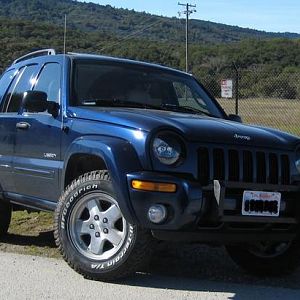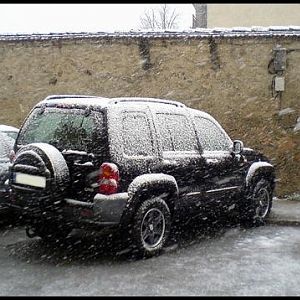chill
Full Access Member
Here is the list first. Because you prolly don't care why I'm worried. There is a lot to look at here as possible reasons for poor gas mileage.
Here are a few engine problems that hurt fuel economy:
- missing or defective thermostat, causing low operating temperature
- clogged intake manifold exhaust crossover passage (for heating intake manifold)
- engine misfire caused by bad spark plug, ignition wire, coil, dist. cap or rotor
- late ignition timing
- bad vacuum advance unit (common in old cars)
- stuck centrifugal advance mechanism in distributor (needs oil occasionally)
- bad tension adjustment of centrifugal advance springs
- defective oxygen sensor (causes rich mixture)
- defective coolant temp. sensor for engine computer (causes rich mixture)
- worn timing belt (may cause rich fuel mixture in fuel injected cars with a MAP sensor)
- incorrect timing belt installation (timing marks should line up)
- sticking or poorly adjusted carburetor choke (causes rich mixture)
- dirty air filter on an engine with a carburetor (causes rich mixture at high power)
- clogged or defective PCV valve
- incorrect valve clearance (especially if too tight)
- high performance camshaft installed (not efficient at low power)
- worn valve guides (makes fuel mixture too lean at low power)
- vacuum leak from bad vacuum hoses or intake system gaskets (causes lean mixture)
- dirty fuel injectors
- bad fuel pressure regulator
- bad MAP sensor for fuel injection
- leaking intake duct between air flow sensor and throttle body
- too much alcohol in gasoline with old car (requires carb. modification for correct mixture)
- rusted or missing exhaust heat stove or pipe for heated air intake
- loss of compression pressure due to worn rings or leaking valves
- sticking EGR valve (causes rough idling and rich mixture on some engines)
- exhaust backpressure caused by clogged catalytic converter, muffler or crushed pipe
- stuck exhaust manifold valve for some V type engines. Intended for fast warm up.
More engine problems:
- high idle speed
- high fast idle speed when cold
- incorrect idle mixture adjustment (carburetor or fuel injection)
- leaking fuel line or carburetor (dangerous too)
- clogged jets (calibrated holes) inside carburetor
- defective power valve in carburetor
- worn camshaft lobes
- high alternator voltage (should be about 14 volts when warm)
- high oil level (interferes with crankshaft movement)
- high oil pressure (relief valve stuck or has wrong spring)
- stuck cooling fan clutch (runs fan when not needed)
Problems that increase rolling resistance:
- sticking disk brake calipers
- tight drum brake adjustment
- warped brake rotor or drum
- sticking parking brake cable
- incorrect wheel alignment, front or rear (check tire wear)
- worn suspension joints (ball joints, steering joints)
- worn control arm bushings (changes wheel alignment)
- worn or incorrectly adjusted wheel bearings
- leaking grease seals for wheel bearings
- use of snow tires when not needed
- leaking tires, causing loss of pressure
- warped tires
- bent rims, causing car to shake
- poor wheel balance, causing shaking at high speeds
- worn shocks or springs (forces driver to brake more)
Automatic transmission problems:
- wrong fluid level
- incorrect throttle valve cable adjustment
- bad vacuum modulator or vacuum hose to modulator
- sticking valves in valve body, causing delayed shifts; changing transmission fluid may help
- failure of torque converter to lock up (if equipped with lock-up torque converter); it should engage at 30-55 MPH, reducing engine speed about 10%
- stuck stator clutch in torque converter
Manual transmission problems:
- wrong fluid level
- excessive oil viscosity
- bad bearings
- failure to engage one or more gears
Differential problems:
- wrong fluid level
- excessive oil viscosity
- bad bearings
- high ratio ring and pinion gear set installed for racing.
Now why I'm worried.
I think I may have screwed something up. Having installed an AEM system i added seafoam to the gas and oil as prescribed by the bottle. I then proceeded to an "Italian tuneup" Heres where I think I broke something. I didn't really go nuts. Just a couple of WOT's and 80 +/- and not for to long. During this no cel or lights, just a brief blink of the stability light. But I think that i still may have burned up theO2's or a spark plug or 2 or something. Or got some crud lodged somewhere that may be causing the low mpg's I went from around 16 city / 20+ highway, to 15 city / 18 highway. The only other thing is the AEM,( I only paid & 200. for it) I wonder if the temp sensor is misreading air temp being only an inch from the TB now. I don't think it's the kit itself cus I would expect that to at the very least stay at the same mpg's. Plus I added pipe insulation to the top of the heat shield to insure a good seal with the hood. So I gotta look into all the things listed above.
Still think I broke something during the WOT. 98k ya know. :shrug:
Here are a few engine problems that hurt fuel economy:
- missing or defective thermostat, causing low operating temperature
- clogged intake manifold exhaust crossover passage (for heating intake manifold)
- engine misfire caused by bad spark plug, ignition wire, coil, dist. cap or rotor
- late ignition timing
- bad vacuum advance unit (common in old cars)
- stuck centrifugal advance mechanism in distributor (needs oil occasionally)
- bad tension adjustment of centrifugal advance springs
- defective oxygen sensor (causes rich mixture)
- defective coolant temp. sensor for engine computer (causes rich mixture)
- worn timing belt (may cause rich fuel mixture in fuel injected cars with a MAP sensor)
- incorrect timing belt installation (timing marks should line up)
- sticking or poorly adjusted carburetor choke (causes rich mixture)
- dirty air filter on an engine with a carburetor (causes rich mixture at high power)
- clogged or defective PCV valve
- incorrect valve clearance (especially if too tight)
- high performance camshaft installed (not efficient at low power)
- worn valve guides (makes fuel mixture too lean at low power)
- vacuum leak from bad vacuum hoses or intake system gaskets (causes lean mixture)
- dirty fuel injectors
- bad fuel pressure regulator
- bad MAP sensor for fuel injection
- leaking intake duct between air flow sensor and throttle body
- too much alcohol in gasoline with old car (requires carb. modification for correct mixture)
- rusted or missing exhaust heat stove or pipe for heated air intake
- loss of compression pressure due to worn rings or leaking valves
- sticking EGR valve (causes rough idling and rich mixture on some engines)
- exhaust backpressure caused by clogged catalytic converter, muffler or crushed pipe
- stuck exhaust manifold valve for some V type engines. Intended for fast warm up.
More engine problems:
- high idle speed
- high fast idle speed when cold
- incorrect idle mixture adjustment (carburetor or fuel injection)
- leaking fuel line or carburetor (dangerous too)
- clogged jets (calibrated holes) inside carburetor
- defective power valve in carburetor
- worn camshaft lobes
- high alternator voltage (should be about 14 volts when warm)
- high oil level (interferes with crankshaft movement)
- high oil pressure (relief valve stuck or has wrong spring)
- stuck cooling fan clutch (runs fan when not needed)
Problems that increase rolling resistance:
- sticking disk brake calipers
- tight drum brake adjustment
- warped brake rotor or drum
- sticking parking brake cable
- incorrect wheel alignment, front or rear (check tire wear)
- worn suspension joints (ball joints, steering joints)
- worn control arm bushings (changes wheel alignment)
- worn or incorrectly adjusted wheel bearings
- leaking grease seals for wheel bearings
- use of snow tires when not needed
- leaking tires, causing loss of pressure
- warped tires
- bent rims, causing car to shake
- poor wheel balance, causing shaking at high speeds
- worn shocks or springs (forces driver to brake more)
Automatic transmission problems:
- wrong fluid level
- incorrect throttle valve cable adjustment
- bad vacuum modulator or vacuum hose to modulator
- sticking valves in valve body, causing delayed shifts; changing transmission fluid may help
- failure of torque converter to lock up (if equipped with lock-up torque converter); it should engage at 30-55 MPH, reducing engine speed about 10%
- stuck stator clutch in torque converter
Manual transmission problems:
- wrong fluid level
- excessive oil viscosity
- bad bearings
- failure to engage one or more gears
Differential problems:
- wrong fluid level
- excessive oil viscosity
- bad bearings
- high ratio ring and pinion gear set installed for racing.
Now why I'm worried.
I think I may have screwed something up. Having installed an AEM system i added seafoam to the gas and oil as prescribed by the bottle. I then proceeded to an "Italian tuneup" Heres where I think I broke something. I didn't really go nuts. Just a couple of WOT's and 80 +/- and not for to long. During this no cel or lights, just a brief blink of the stability light. But I think that i still may have burned up theO2's or a spark plug or 2 or something. Or got some crud lodged somewhere that may be causing the low mpg's I went from around 16 city / 20+ highway, to 15 city / 18 highway. The only other thing is the AEM,( I only paid & 200. for it) I wonder if the temp sensor is misreading air temp being only an inch from the TB now. I don't think it's the kit itself cus I would expect that to at the very least stay at the same mpg's. Plus I added pipe insulation to the top of the heat shield to insure a good seal with the hood. So I gotta look into all the things listed above.
Still think I broke something during the WOT. 98k ya know. :shrug:










